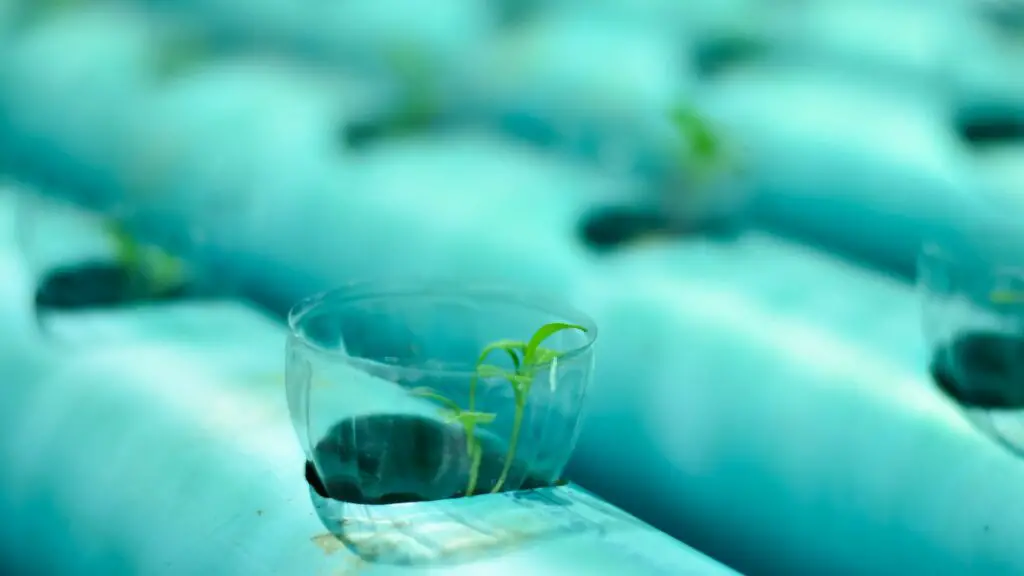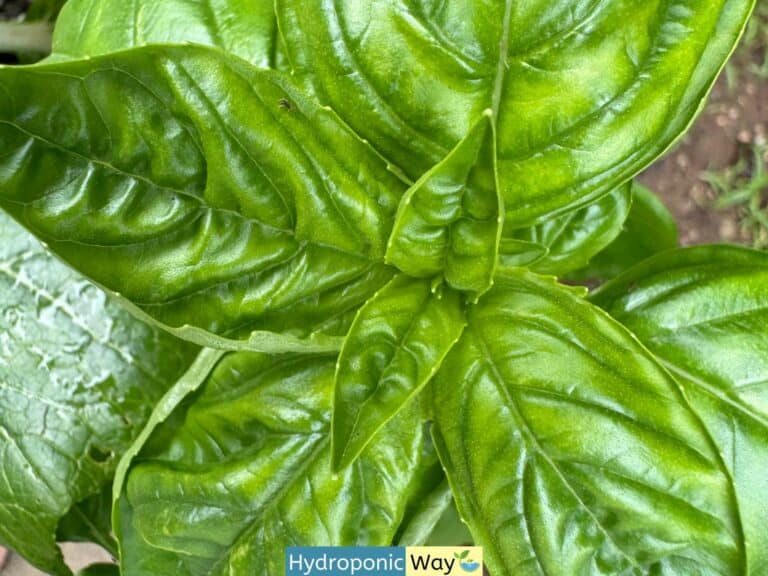How to Choose the Right Size Net Cup for Hydroponic System
Disclosure: Your purchases through our links may earn us a small commission, supporting our site’s ability to provide valuable information to our readers. Rest assured, it won’t impact your price. Thank you for your support.
If you’re new to hydroponics, you may wonder what net cups are and why they’re important for your system. Hydroponic net cups are the containers used for growing plants in hydroponic systems. They are generally made of plastic netting and ideal for holding a growing medium such as rock wool, vermiculite, or perlite. Net cups help support the plants and allow the roots to grow freely while providing adequate drainage.
Choosing the right size net cup for your hydroponic system can be tricky. You don’t want a net cup that’s too small, which can lead to root damage, nor do you want one that’s too large, which can take up valuable space in your system.
In this blog post, we’ll go over the factors you need to consider when choosing the right size net cup for your hydroponic system, including special features, mounting types, and material properties.
Why Are We Using Net Cups in Hydroponics?
Net cups are an integral part of any hydroponic system, as they are designed to hold and support your plants’ root systems. By providing a supportive and breathable environment, your plants’ roots can access the air they need to grow and thrive.
When the roots grow through the netting, it allows for better water and nutrient uptake, leading to healthier plants.
Moreover, the net cups make it easy to transplant seedlings and grow various plants in one system.
What Sizes Are Available for the Net Cups to Buy?
Net cups come in various sizes, ranging from 1 inch small to 10 inches large. The exact sizes available in Amazon stores are 1″, 1.5″, 1.75″, 1.77″, 2″, 2.5″, 2.75″, 3″, 3.5″, 3.75″, 4″, 4.5″, 5″, 6″, 7″, 8″, 9″, 10″. Click this link to buy net pot from Amazon, depending on your needs. You can filter your specific requirement to select the best net cups.
What Are the Hydroponic Net Cups Shapes Available in the Market?
They are primarily available in both round and square shapes, as well as different depths.
Selections of round shape net pots
Selections of square shape net pots
How to Choose the Right Size of Net Cups for Hydroponics?
To choose the right size net cup, consider the below
- Type of plant you’re growing
- The size of your hydroponic system
- The root structure of your plants
Smaller net cups in the range of one to three inches in diameter are ideal for growing smaller plants such as lettuce or basil and are generally used for germinating seeds.
Larger net cups in the four to ten inches range are better suited for bigger plants like tomatoes. They will provide more space for root growth
What Are the Special Features Available in Net Cups for Hydroponics?
Special features available in net cups include below listed
- Waterproof and UV-resistant materials
- Tapered edges for easy planting
- Secure snap-on lids that prevent debris and pests from getting into the cups
- Self-watering wicks (link to buy such net pots)
- Lightweight
Do I Need to Know the Mounting Types Available in Net Cups Before Buying Them for Hydroponics?
Yes, it’s important to know what mounting types are available in net cups for hydroponic systems. The most common mounting types include:
Vertical – These net cups can be mounted vertically onto a wall or container, ideal for hanging planters and grow towers.
Horizontal – These net cups can be mounted horizontally onto a frame or container and are ideal for tabletop hydroponic systems.
Link to buy net cups with plant hangers
Link to buy net cups with wall mounts
Link to buy net cups with plant stands
Are Different Net Cups Needed for Indoor and Outdoor Hydroponics?
There is no significant difference between indoor and outdoor hydroponic net cups. However, outdoor cups may need to be UV-resistant as the sun’s rays can cause the plastic to become brittle over time.
Link to buy net cups specially made to use in outdoor conditions.
What Can I Use Instead of Net Cups?
An alternative to using net cups for hydroponic systems is a grow bag. Grow bags are made from breathable fabric, allowing for better aeration and drainage than traditional plastic pots, making them an ideal choice for hydroponic gardens. Grow bags come in various sizes and shapes, so it’s easy to find one that fits your needs. Additionally, they are lightweight, making them easy to move around as needed.
When using grow bags for hydroponics, it’s essential to ensure the system has adequate drainage so the plants don’t become waterlogged. This can be accomplished by adding holes in the bottom of the bag or using a raised stand with a water reservoir underneath.
Which Is Better to Use in Hydroponics Net Pots or Cups?
Both net pots and cups are great for hydroponic systems, and the main difference is in their design. Cups are cylindrical, while net pots are broader at the base and more tapered at the top. This tapering allows the roots to grow toward the top of the container to access more oxygen while still being supported by the pot.
How to Choose the Right Materials for Net Cups for Hydroponics
Net cups are generally made from plastic or polypropylene and come in different colors and patterns. The type of material used affects the durability and flexibility of the cup, so choosing a material that will last is crucial.
When choosing the right material for your hydroponic net cups, consider factors such as safety, durability, and environmental impact. This is especially important when choosing a larger size, as it will hold more weight and need to withstand the additional stress. Quality net cups will also be better able to withstand any water or nutrient spills, ensuring that your hydroponic system will stay in good condition for longer.
- Food-grade plastics such as polypropylene and polyethylene are safe and durable, making them ideal for hydroponic systems.
- Plastic net cups offer durability, affordability, and easy cleaning. The downside to plastic is that it can be prone to cracking and warping over time due to changes in temperature and exposure to UV light.
- Polypropylene and polyethylene plastics are safe for growing vegetables in hydroponic systems. These plastics are food-grade and don’t leach chemicals into the water or plants.
Can You Use Plastic Cups as Net Pots for Hydroponics?
Plastic cups can be used as substitutes for net cups. However, they are less breathable than netting, making them unsuitable for hydroponic systems. The lack of proper ventilation will lead to mold growth and may also cause root rot.
Can You Reuse Net Cups?
Yes, you can reuse net cups by cleaning them thoroughly before each use. This practice is cost-effective and environmentally friendly.
How to Make DIY Net Cups for Hydroponics?
Making your own DIY net cups for hydroponics is a great way to save money and customize your hydroponic system. With the right supplies, you can quickly make sturdy and reliable net pots for your plants.
To start, you’ll need water-resistant material like plastic mesh or cloth and some durable twine or hemp rope. Cut the material into circles and wrap it around a mold like an old yogurt container, then use the twine to secure it in place. Finally, cut small holes in the bottom for drainage, and your net pots are ready for use!
With the right supplies and creativity, creating DIY net cups for hydroponics is a great way to customize your system and get the best results.

Conclusion
In conclusion, choosing the right size net cup for your hydroponic system is crucial to the success of your plants. When selecting a net cup, consider plant size, system type, and root structure. Remember to choose safe, durable, and environmentally friendly materials to ensure optimal plant growth.
Further, when choosing a net cup for your hydroponic system, it’s important to consider your future needs. Depending on the type and size of your system, you may need to switch out your net cup for a larger or smaller size. It’s important to think ahead and purchase a net cup that will accommodate any future changes you may need to make.
Thank you for reading!
Also, read:
The Essential Equipment and Guide to Winter Hydroponics – Keep Your Plants Thrive
Do Grow Light Colors Matter?
10 Essential Tools for Indoor Home-Based Hydroponic Gardeners.





